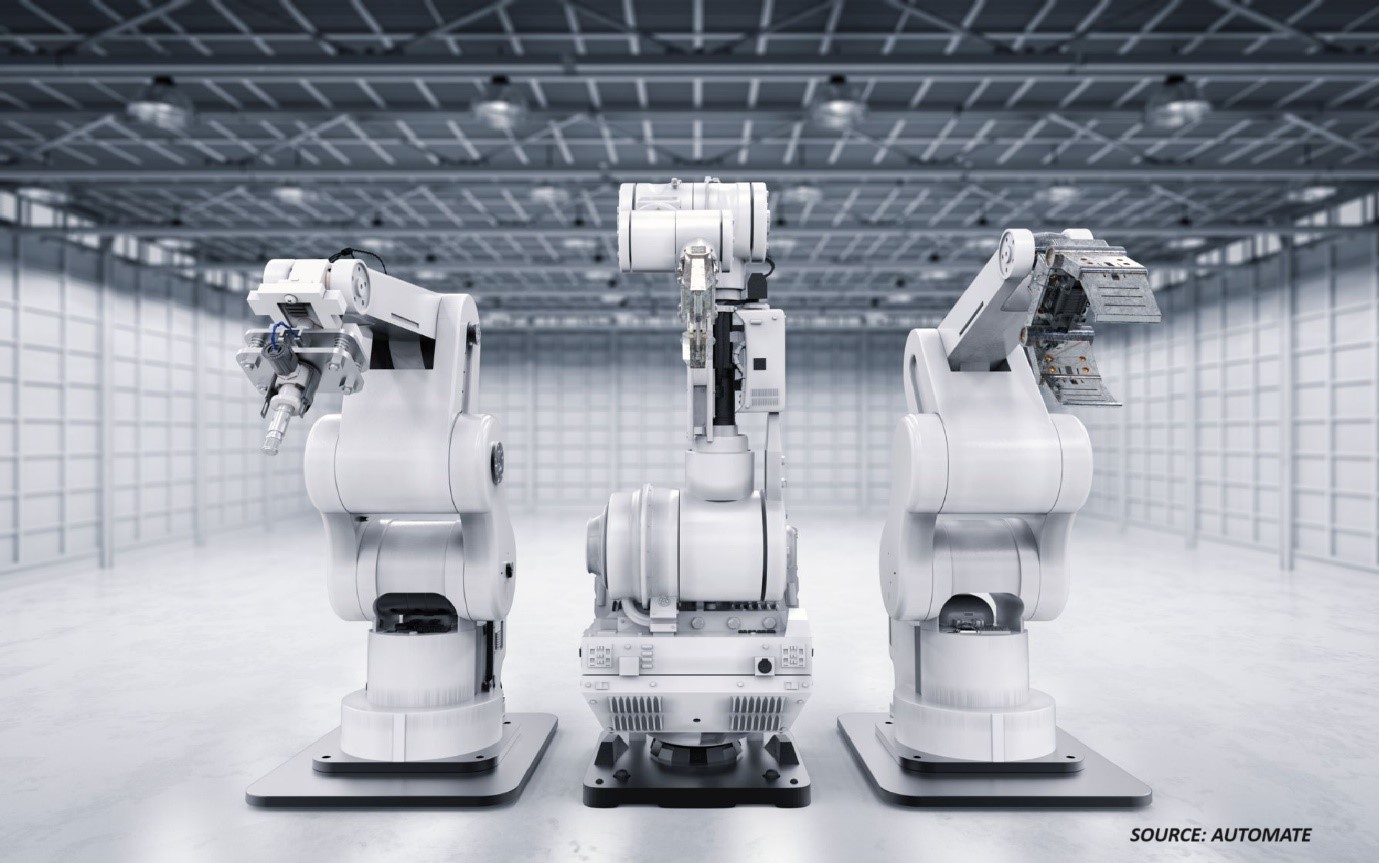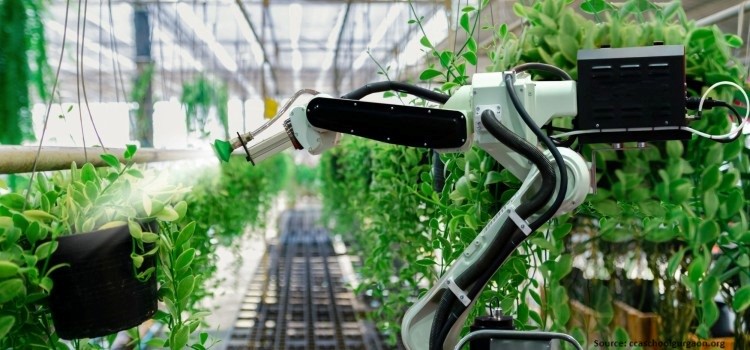
Russia Wafer Handling Robots Market by Product Type (Vacuum Wafer Handling Robots and Atmospheric Wafer Handling Robots), by Number of Arms (Single Arm and Dual Arm), by Robot Type (Linear Robots, SCARA Robots, Articulated Robots, Cylindrical Robot, and Others), by Operation (Motor Driven and Belt Driven), by Installation (Free Standing and Integrated), by Wafer Size (Up to 100 mm, 150 mm, 200 mm, 300 mm, and Above 300 mm), by Semiconductor Process (Oxidation (Deposition), Lithography, Etching, Cleaning, Polishing, Inspection & Testing, and Assembly & Packaging), by End Use (Integrated Device Manufacturer (IDM) and Foundries) –Opportunity Analysis and Industry Forecast, 2024–2030
Industry: ICT & Media | Publish Date: 24-May-2024 | No of Pages: 169 | No. of Tables: 132 | No. of Figures: 97 | Format: PDF | Report Code : N/A
Russia Wafer Handling Robots Market Overview
The Russia Wafer Handling Robots Market size was valued at USD 0.9 million in 2023, and is predicted to reach USD 2.3 million by 2030, at a CAGR of 14.1% from 2024 to 2030. Also, the market size was 16.0 units in 2023, and is predicted to reach 59.0 units by 2030, with a CAGR of 19.8% from 2024 to 2030. A wafer handling robot represents a specialized robotic solution designed to streamline the complex procedures inherent in semiconductor manufacturing. These robots demonstrate exceptional proficiency in executing precise movements and positioning tasks with fragile semiconductor wafers. Their significance lies in their pivotal role in the creation of top-tier integrated circuits and microelectronic devices.
Operating within pristine cleanroom environments, they incorporate a diverse range of end effectors, sensors, and vision systems to securely grasp, inspect, and manipulate wafers, all while mitigating the risks of damage or contamination. By seamlessly integrating with other fabrication equipment, these robots not only boost operational efficiency and minimize errors but also foster the consistent production of cutting-edge semiconductor technologies that power an extensive array of contemporary devices.
Technological Advancements in Robotics Is Driving the Russia Wafer Handling Robots Market
The technological progress in robotics is transforming wafer handling capabilities. These advancements boost precision, speed, and adaptability, making wafer handling robots more attractive to manufacturers seeking operational optimization. With improved precision, robots delicately handle wafers, minimizing errors. Enhanced speed accelerates processes, reducing cycle times and meeting tight deadlines.
Meanwhile, increased adaptability ensures seamless integration into diverse manufacturing environments. As a result, wafer handling robots are becoming essential tools for manufacturers aiming to stay competitive in the semiconductor industry.
Increasing Emphasis on Automation Solutions Boost the Russia Wafer Handling Robots Market Growth
In an era increasingly prioritizing efficiency and productivity across industries, the demand for automation solutions, particularly in semiconductor manufacturing, is on the rise. Wafer handling robots play a crucial role in this context, adeptly streamlining intricate processes while ensuring the essential criteria of precision and reliability in wafer manipulation.
As manufacturers endeavour to optimize their operations and navigate shifting market dynamics, the integration of wafer handling robots emerges not merely as beneficial but as indispensable. These robots enable smooth management of wafers throughout the production cycle, minimizing errors, reducing cycle times, and ultimately enhancing the efficiency of semiconductor manufacturing processes.
High Initial Cost Restrains the Russia Wafer Handling Robots Market Growth
The high cost of wafer handling robots significantly constrains the market's growth. The initial investment required to acquire, integrate, and maintain these sophisticated automation systems can be a substantial financial burden for companies, especially those operating within budget limitations. This financial constraint can discourage potential adopters from entering the market or expanding their automation capabilities.
Incorporation of Advanced Technologies such as Computer Vision and AI to Enhance Precision
Incorporating cutting-edge technologies such as Artificial Intelligence (AI), computer vision, and the Internet of Things (IoT) into robots presents extensive opportunities for market expansion.
These integrations empower wafer handling robots to streamline processes, increase operational efficiency, and enable predictive maintenance. AI algorithms play a vital role in refining robot movements, improving quality control by identifying defects in real-time, and predicting maintenance needs.
Computer vision ensures accurate handling of wafers and precise object recognition, even in complex operational settings, while IoT connectivity enables real-time monitoring, data exchange, and predictive maintenance, thereby reducing downtime.
Additionally, advanced safety features, data analytics capabilities, and enhancements in energy efficiency further underscore the importance of wafer handling robots as indispensable assets within the dynamic semiconductor manufacturing landscape.
Competitive Landscape
Russia wafer handling robots industry comprises various market players, such as include Kawasaki Heavy Industries, Ltd., Nidec Instruments Corporation, Yaskawa Electric Corp., RORZE Corporation, DAIHEN Corporation, Hirata Corporation, Rexxam Co., Ltd., KUKA AG, ULVAC, Inc., and Stäubli International AG.
Russia Wafer Handling Robots Market Key Segments
By Product Type
-
Vacuum Wafer Handling Robots
-
Atmospheric Wafer Handling Robots
By Number of Arms
-
Single Arm
-
Dual Arm
By Robot Type
-
Linear Robots
-
SCARA Robots
-
Articulated Robots
-
Cylindrical Robot
-
Others
By Operation
-
Motor Driven
-
Belt Driven
-
Stainless Steel Belts
-
Rubber Belts
-
Polymer Belts
-
By Installation
-
Free Standing
-
Integrated
By Wafer Size
-
Up to 100 mm
-
150 mm
-
200 mm
-
300 mm
-
Above 300 mm
By Semiconductor Process
-
Oxidation (Deposition)
-
Lithography
-
Etching, Cleaning, Polishing
-
Inspection & Testing
-
Assembly & Packaging
By End Use
-
Integrated Device Manufacturer (IDM)
-
Foundries
REPORT SCOPE AND SEGMENTATION:
|
Parameters |
Details |
|
Market Size in 2023 |
USD 0.9 Million |
|
Revenue Forecast in 2030 |
USD 2.3 Million |
|
Growth Rate |
CAGR of 14.1% from 2024 to 2030 |
|
Market Volumes in 2023 (units) |
16.0 |
|
Volumes Forecast in 2030 (units) |
59.0 |
|
Growth Rate |
19.8% |
|
Analysis Period |
2023–2030 |
|
Base Year Considered |
2023 |
|
Forecast Period |
2024–2030 |
|
Market Size Estimation |
Million (USD) |
|
Growth Factors |
|
|
Companies Profiled |
10 |
|
Market Share |
Available for 10 companies |
|
Customization Scope |
Free customization (equivalent up to 80 working hours of analysts) after purchase. Addition or alteration to country, regional, and segment scope. |
|
Pricing and Purchase Options |
Avail customized purchase options to meet your exact research needs. |
KEY PLAYERS
-
Kawasaki Heavy Industries, Ltd.
-
Nidec Instruments Corporation
-
Yaskawa Electric Corp.
-
RORZE Corporation
-
DAIHEN Corporation
-
Hirata Corporation
-
Rexxam Co., Ltd.
-
KUKA AG, ULVAC, Inc.
-
Stäubli International AG.




 Speak to Our Analyst
Speak to Our Analyst


































